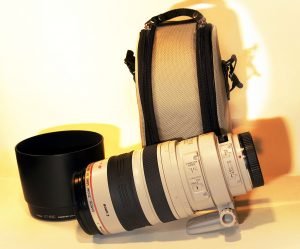
 When setting out on a journey into digital photography, you will no doubt have looked at other people’s work online and thought “How do they get their shots to look that good?”
When setting out on a journey into digital photography, you will no doubt have looked at other people’s work online and thought “How do they get their shots to look that good?”
Well most of it is practice and comes with experience and some is having an eye for it. Don’t worry if you think you haven’t got the eye, it will come with a little effort and experience. The beauty of digital photography is that we no longer have to wait to have a film developed to see how the shots came out. With digital photography you can take as many shots as you like, review them, and discard those you don’t like – freeing up space on your memory card for your next attempts.
Whether you’re a budding amateur photographer, or you simply want to take better photos of your family, here are some handy tips to take with you the next time you venture out with your digital camera.
It doesn’t matter if you’re new to digital photography, a seasoned amateur or a professional, there are always a few things you can do to improve your workflow or how you take that better shot. We never stop learning our digital camera skills.
Digital photography is something everyone can get into and even a beginner can take professional-looking photos – suitable for framing, selling online, showing off your skills on your own web site or for outing one of the many social media or photo-sharing sites.
Below are my 8 top tips for getting better digital photos
Tip 1: Preparation
Find somewhere to keep your camera equipment where it’s all kept together, and safe from damage. Be it kids, pets or other risks such as water, I can guarantee that over time your investment in equipment will go up. There will come a point where you look at the equipment you have collected and thing “Wow! Just how much have I spent?” On that note, remember to check your insurance policy. Replacing it all at once will not be a cheap exercise.
Anyway, back to preparation, keeping your photography equipment together and ready for use will mean that if you have a flash of inspiration, or you see an interesting weather pattern, you can grab the kit you need and head off out in a few minutes. For instance, I have a few camera bags. Some will take my camera and one or two lenses; others are more back-pack size if I’m going out for a day and want to have more choice of wide and telephoto lenses plus other accessories such as spare batteries, memory cars filters and lens hoods. I even have space in the sides for a drinks bottle and monopod. Lastly, I have a waterproof cover and a pair of photographer’s gloves for when it’s cold and wet that help hold the camera in place and give it that extra level of protections from bangs and bumps.
I can be ready to go out in 5 minutes!
Tip 2: Have a Steady Camera
If your shots come out blurry, it will most likely be to camera movement. Relying on your own balance and ability to keep your arms steady isn’t going to be enough as you slow shutter speeds and zoom in further – and you can’t always rely on a lens with image stabilisation as not all have it.
So, make sure you take time to steady yourself, and your camera, before you take the shot.
Get a spot where you can get good footing and stable. The closer your elbows are to your body, the more stable your posture will be. An LCD viewer is good for reviewing the photos once you’ve taken them and making some settings adjustments. But, when you take the photo, use the viewfinder as this will naturally rest the camera against your forehead so you can frame the shot more precisely. For extra stability, I often steady my upper body by leaning against a wall or a tree. If you want to totally eliminate camera movement, for instance when you have a zoom on for wildlife or sports photography, then use a tripod. Remember though, you’ll still have to make sure it’s on a stable base and if it’s windy, you may need to weight it down.
When you’re all steady and set, gently press the shutter release in one motion. Pressing the shutter release too hard could jerk the camera downward. If you really want to avoid camera shake when you press the button, you can use an external trigger but that’s only really for when you are using a tripod.
Tip 3: Get Closer
Good composition can make the difference between taking snaps and great photos. Unless you’ve ventured out to capture that landscape shot, the main way you can improve the shot is simply by getting closer to whatever it is you want to capture. Sometimes, you won’t be able to physically get any closer so that’s when you’ll need a zoom lens to bring the subject nearer to you. Try to get within a few metres, or less, of your subject so it covers the frame and this will enable you to remove any distraction from the background and draw it to the subject.
Tip 4: Snap, snap, snap – take loads of photos
One of the major advantages of digital cameras is you can take lots of pictures of the same scene and either review them there, or when you get home, and delete them when you get home. If you review them at the location you can decide if you have captured what you wanted to, or make changes if you think the settings need tweaking, or you can just carry on making adjustments to your location if necessary.
This is such an advantage over film cameras as you can instantly decide if you have captured the shot you want without waiting for it to be developed. Disk space is so cheap now it’s not a barrier to the number of shot you take. Fill the memory card and carry a spare if needs be to get that shot that makes it all worth it!
Don’t think it’s a sign of being an amateur – professionals will sometimes take hundreds of shots of the same subject to find the one or two that they want. This is especially true in sport photography. There’s a photographers’ saying that if you see an incident with your eye – it’s too late. You need to see it on the LCD or at home on the computer after you’ve capture it. Have a look at the photo from this motor-sport event at Brands Hatch I took to see what I mean. I took about 1000 photos that day in burst mode.
Tip 5: Change the Lighting
Try to avoid using a flash if you’re taking photos of people. You’ll find that natural light will give you more natural skin tones.
If you’re taking these pictures outside in the daylight, then this is easier but if you are indoors you’ll have to spend a little more time getting the lighting right. Looks for a natural source such as a window or glass external door to get those warmer tones compared to those when using the flash.
Even with natural light you can experiment with shadow strength by moving the subject in relation to a window or adjusting their position to create some dramatic shadows.
Tip 6: Eliminating Red-Eye
The bane of photographers’ lives, red-eye is caused by light passing through your subject’s eye and reflecting back into the lens. It’s more noticeable when using a flash, because a flash creates a much more intense which isn’t as diffused as natural light. That means that the best way to avoid red-eye is to not use a flash unless you really need to. If you take indoor portrait shots frequently, and natural light isn’t available or easy to control, invest in some studio lights that you can control the angle and brightness of. They don’t have to be expensive.
An alternative way to reduce red-eye is by positioning your subject so they aren’t looking at the camera. Having them look off to one side, or slightly up or down. This will reduce the chance of red-eye because the reflected light isn’t directed straight back at your lens.
If you really want that face-on shot, and you also have to use your flash, your camera may have a built-in red-eye reduction feature so try using that and see how you get on with that.
Tip 7 – Position Multiple Subjects
If you’ve got two or more people in the scene, then instead of having them all look straight at the camera, have them interact with each other in some way to make it look more natural and less forced. People having a conversation, or one laughing at something the other one may have said creates a photo that is more interesting and draws the viewer in to the picture with them wondering what caused the reaction.
Tip 8: Make the scene interesting
Setting your scene with the subject in the middle is fine for some shots but can be dull. Try experimenting by framing the shot with them off centre and see if the results are better. If you are using a digital camera you can try, check and keep adjusting until you are happy. You can always delete what you don’t like.
Try positioning your subject(s) so that they occupy a half to a third of the total composition, ensuring they are not in the middle of the frame. You should try to add an interesting background or some object in the rest of the frame, so it doesn’t look like you have mis-aligned the shot.
This technique is worth practising as it will make your pictures more professional.
In Summary
Using these tips above you can practise and improve your photography craft. Over time, and with practise you will get better and better and create more professional shots. Always remember like any skill it is always with practise that we improve so you should be patient and continue to learn and refine the craft.




